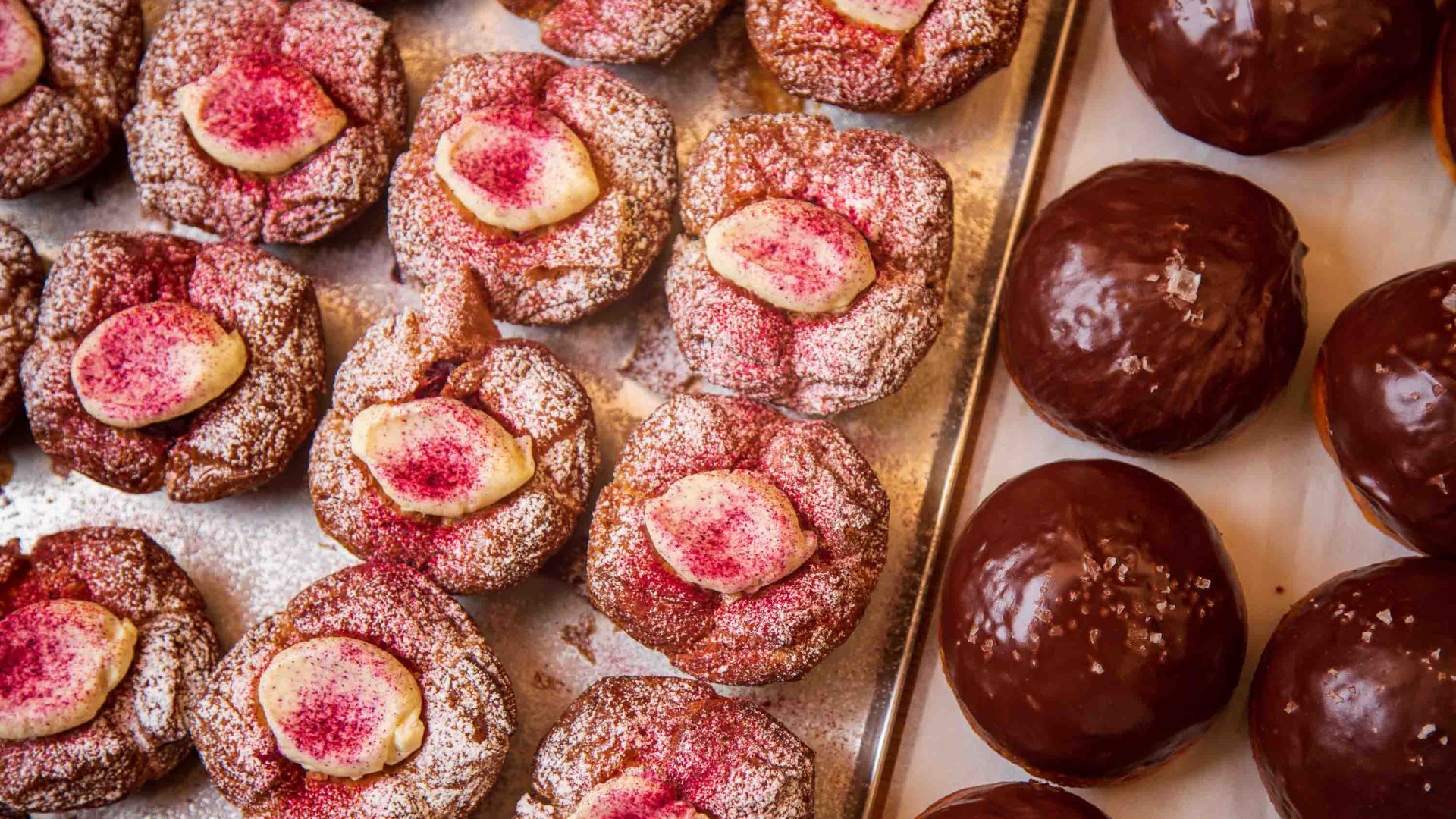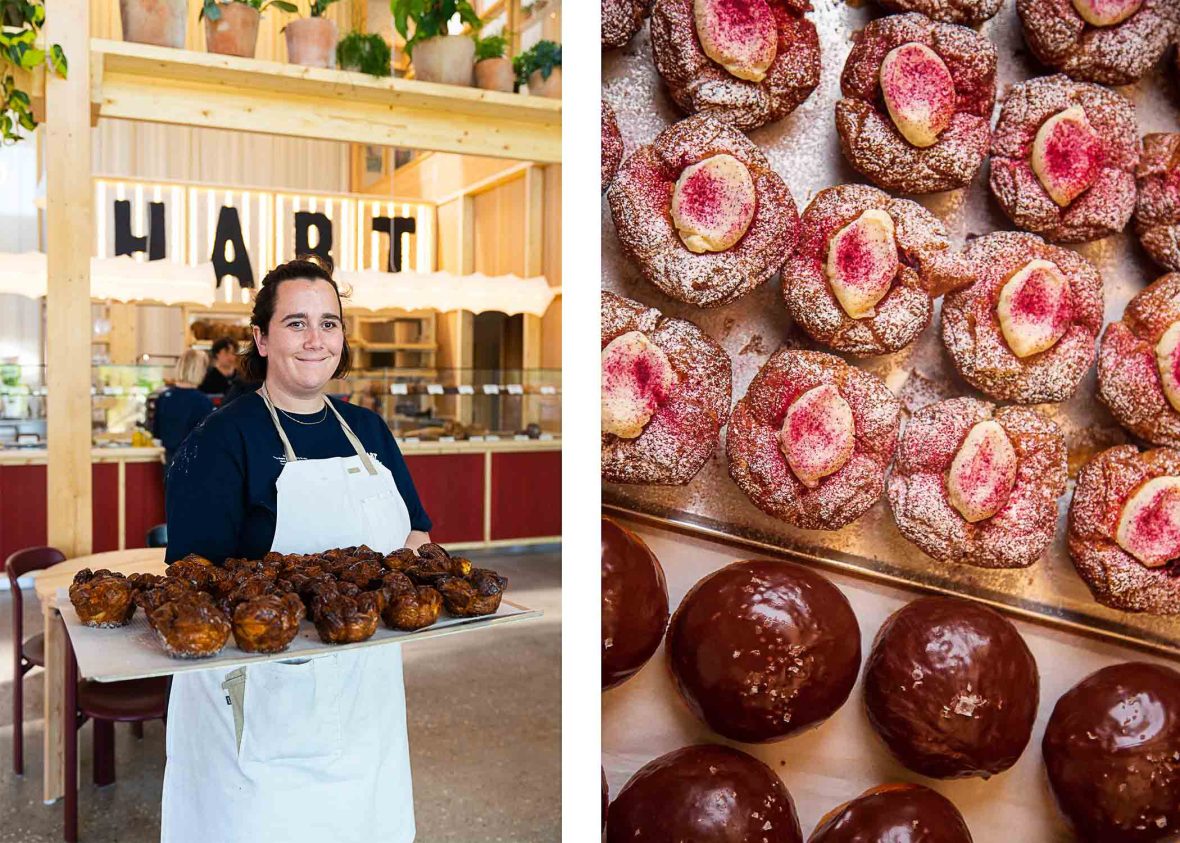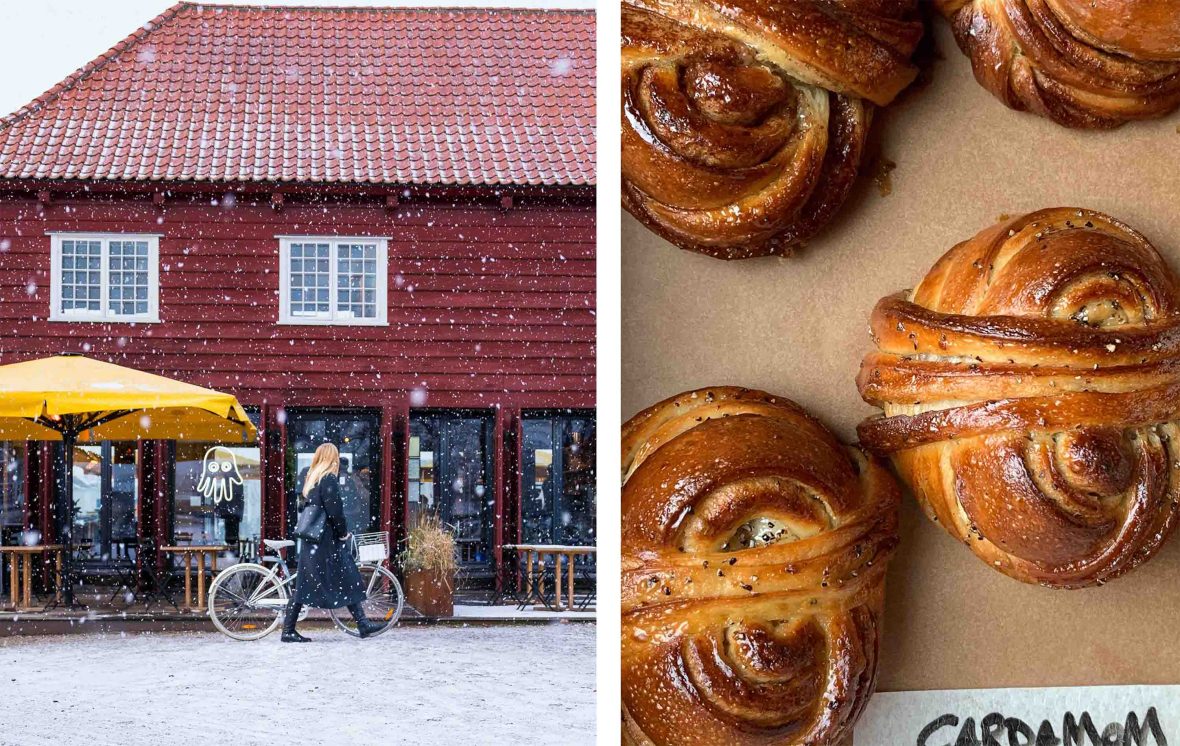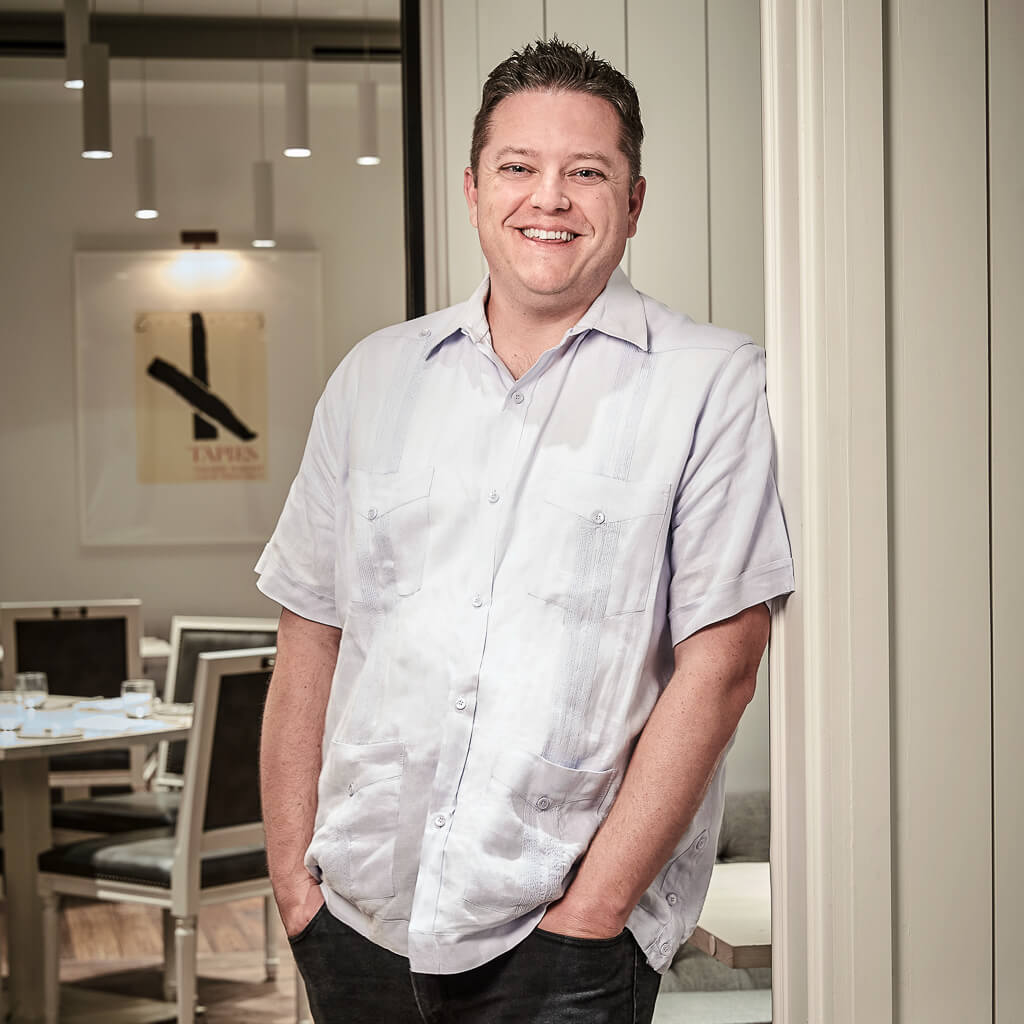
Everyone loves a flaky Danish pastry, but why exactly are these treats so universally loved? Pooja Shah has a sweet time in Copenhagen finding out.


Everyone loves a flaky Danish pastry, but why exactly are these treats so universally loved? Pooja Shah has a sweet time in Copenhagen finding out.
As a New Yorker and a recent London transplant, I’ve often avoided baked goods because of the American perception that it was ‘unhealthy’. I grew up around fashion magazines and media defaming sugar and baked goods; instead, I worshipped intermittent fasting, green smoothies and over-exercising. Breaking out of the mindset that eating a dessert or sugary item does not need to be earned—or calorically burned— has been a personal struggle.
But maybe I’m about to change my tune… It’s the aroma that hits me first—a warm, inviting blend of buttery pastry and fragrant cinnamon wafting from the cozy bakery in the heart of Copenhagen. I step inside Lagkagehuset, greeted by a tempting display of freshly baked kanelstang, a classic Danish pastry that best translates to ‘cinnamon stick’, behind the glass counter.
I scan the selections, tempted to order them all. I restrain myself and focus on the baker delicately twisting the kanelstang’s flaky dough into a long, spiral shape before handing a baked one to me. The golden-brown crust has a sheen of glaze, and ribbons of cinnamon sugar wind their way through the layers… my mouth is watering.

Denmark has a rich and celebrated baking tradition that dates back centuries and stems from a reimagination of bread thanks to influences from abroad. Its bread-baking history can actually be traced back to Austria; the Danish word for bread is ‘Wienerbrød’ which literally translates to ‘Vienna bread’.
In the mid-19th century, a strike among Danish bakers led to a shortage of skilled labor in the country’s bakeries. To address this dearth, bakers from Austria were brought to Denmark, bringing with them the techniques and recipes of the renowned Viennese baking tradition. These Austrian bakers introduced their method of laminating dough with butter, which creates the flaky, layered textures now synonymous with Danish pastries. They also brought their unique flavor combinations and fillings, such as custards, jams, and cream cheese. Today, baking is deeply ingrained in Danish culture and an integral part of everyday life.
“There’s a deep connection between culture and food, especially baked goods in Denmark, and it’s a country that empowers you to enjoy a conversation with a colleague, friend or family member over a shared treat.”
- Talia Richard-Carvajal, COO and Creative Director, Hart Bageri
“Bread is one of the staples of human history which has been around forever,” explains Chiara Barla, curating partner at Copenhagen bakery and café Apotek 57, inside Copenhagen’s Frama Studio Store. “With the global fascination over Noma, deemed one of the world’s best restaurants, it created a renaissance that attracted many talented chefs to provide their culinary expertise.”
Noma has a lot to answer for, in a good way. The restaurant and its founder, René Redzepi received international recognition and numerous Michelin stars for creating new Nordic cuisine and inspiring chefs to develop new flavors and experiment with gastronomic limits. As a result, chefs from around the world were attracted to innovating and rethinking bread and baked goods.
But they soon realized that while there was an influx of restaurant industry professionals from the UK, US, Italy and other parts of Europe, there was a lack of traditional restaurants that they could work in—they needed to steer away from restaurant business and instead, open bakeries to satisfy the growing sweet tooth in the country.

It wasn’t until this recent girls’ trip which sees my best friend and I pastry-hop through Copenhagen, starting each day with a sweet treat and coffee, that I realized that while this is holiday indulgence for us, the Danes embrace a culture where pastries are a routine start to their day.
They understand that life is meant to be savored, and what better way to do so than by indulging in a freshly baked pastry and a steaming cup of coffee?
“Danish culture has a different perspective when it comes to health consciousness,” says Talia Richard-Carvajal, COO and Creative Director at Copenhagen bakery Hart Bageri where everything is made by hand and whose co-founder and owner Richard Hart used to be the baker at Noma.
“Unlike the UK and US, the Danes believe in organic, natural flavors and ingredients,” adds Richard-Carvajal. “They don’t focus on cutting out groups of foods, but enjoying everything in moderation.”

If you analyze the makeup of a Danish pastry, you’ll note these intricate, flaky treats are different from the typical baked goods found in comparable American bakeries. At the core of Danish pastries, spices such as cinnamon and ingredients like pastry cream are signature components. Other notable ingredients in Danish pastries are butter, dough, almonds, a whipped cream or custard, and according to Richard-Carvajal, a big spoonful of nostalgia.
“There’s a bun for every occasion,” jokes Richard-Carvajal. “There’s a deep connection between culture and food, especially baked goods in Denmark, and it’s a country that empowers you to enjoy a conversation with a colleague, friend or family member over a shared treat.”
Bakers like Barla and Richard-Carvajal are not interested in reinventing the pastry, but instead, improving the current recipe by slightly modifying proportions and ingredients to create vegan and even gluten-free options.
Danish pastries have a way of evoking a sense of nostalgia that transcends cultural boundaries. While I come from a South Asian background where my childhood kitchens were filled with the aromas of cardamom and condensed milk, stepping into a Danish bakery and inhaling the comforting scents of cinnamon and freshly baked dough instantly transports me back to my mother’s kitchen.

There’s something about the perfect balance of sugar and buttery richness that triggers an emotional reaction, a longing for simpler times and cherished memories—which is possibly why there is a visceral obsession over these Danish treats and one of the reasons why bakeries like Hart remained open over the pandemic.
“In the pandemic we were very surprised that Hart stayed open,” Richard-Carvajal tells me, “and in fact, the first two weeks of lockdown were the busiest. Pastries were the last element of luxury and they are also a nostalgic treat that people were able to enjoy. Post-pandemic, that feeling of self-care remained.”
With the resurgence of Danish bakery Ole & Steen in North America and Europe, the Danish pastry continue to rise in popularity among its newer demographics—bakers from other parts of Europe and North America. Bakers like Barla and Richard-Carvajal are not interested in reinventing the pastry, but instead, improving the current recipe by slightly modifying proportions and ingredients to create vegan and even gluten-free options. “More consumers are leaning into the vegan trend or focused on their dietary choices. We focus on making pastries that suits each individual,” adds Barla.
“Danish pastries are easy to understand and their flavors are recognizable,” explains Barla. “Since the pastries are not overly complicated, it’s a simple way for people to experience local culture. Plus, it’s accessible and does not require people to seek out fine dining or expensive experiences. It’s available for everyone.”

During my Copenhagen sojourn, my friend and I sit in many a sun-dappled café, unearthing layers of our friendship and bonding over freshly baked tebirkes, marzipan-filled pastry topped with poppy seeds. And when I see the long queues snaking outside every bakery, no matter the hour, I realize one thing is abundantly clear: The Danish pastry is a part of this country’s culinary heritage that refuses to be supplanted by passing fads or trends.
Back at Lagkagehuset, the ribbons of cinnamon sugar melt on my tongue with each bite, and I can’t help but dab at the corners of my mouth, savoring every last trace of sweetness. In that moment, it all became clear: This isn’t just a baked good or a pastry, but a symbol for pure, unadulterated joy.
***
Adventure.com strives to be a low-emissions publication, and we are working to reduce our carbon emissions where possible. Emissions generated by the movements of our staff and contributors are carbon offset through our parent company, Intrepid. You can visit our sustainability page and read our Contributor Impact Guidelines for more information. While we take our commitment to people and planet seriously, we acknowledge that we still have plenty of work to do, and we welcome all feedback and suggestions from our readers. You can contact us anytime at hello@adventure.com. Please allow up to one week for a response.

Pooja Shah is a lawyer and freelance travel and culture writer with bylines in Vogue, Thrillist, Glamour and more. Pooja is originally from New York City but currently lives in London. She also sits on the DEI Committee of the British Beauty Council and is using her position to add diversity to the beauty industry.








Can't find what you're looking for? Try using these tags: